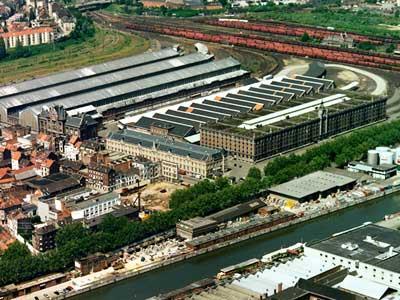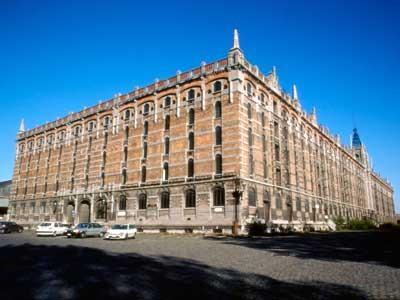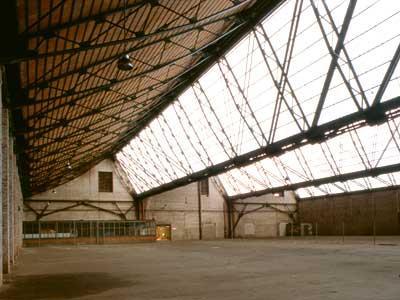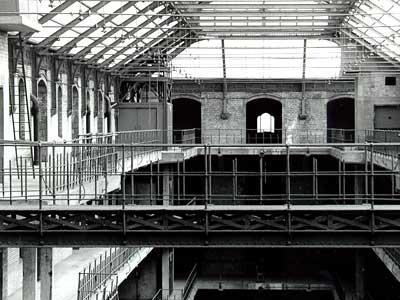Beginning in the early 20th century, Belgian railroad, customs, and maritime interests converged at Tour and Taxis, a model transportation hub designed by architect Van Humbeek. Built in 1903 and inspired by Flemish Renaissance traditions, the warehouses and related structures exploit the properties of cast-iron, reinforced concrete, steel, and glass to their fullest potential. With the formation of the European Community, customs and storage practices changed, rendering much of the facilities obsolete. Abandoned in the 1980s, new plans for the redevelopment of the site threatened to destroy the integrity of the complex.
1996, 1998 and 2000 World Monuments Watch
After years of advocating for appropriate action, and the tireless efforts of local preservationists, a developer came forward with a plan to reuse the buildings that was both practical and sensitive to the unique architectural features of the historic buildings. In December of 2001, Project T&T purchased the site and a master plan was developed to transform the site into a multifunctional urban community. Tour and Taxis today features over 55,000 square feet of retail, office and event space.
The complex’s rationalist town planning, engineering, and architectural ideals – where the potentials of cast-iron, reinforced concrete, steel, and glass were realized – was revolutionary. Awarded the medal for conservation and redevelopment by Europa Nostra in 2008, Tour and Taxis’ respectful adaptation of industrial heritage is an excellent example of successful urban preservation.Beginning in the early 20th century, Belgian railroad, customs, and maritime interests converged at Tour and Taxis, a model transportation hub designed by architect Van Humbeek. Built in 1903 and inspired by Flemish Renaissance traditions, the warehouses and related structures exploit the properties of cast-iron, reinforced concrete, steel, and glass to their fullest potential. With the formation of the European Community, customs and storage practices changed, rendering much of the facilities obsolete. Abandoned in the 1980s, new plans for the redevelopment of the site threatened to destroy the integrity of the complex. After years of advocating for appropriate action, and the tireless efforts of local preservationists, a developer came forward with a plan to reuse the buildings that was both practical and sensitive to the unique architectural features of the historic buildings. In December of 2001, Project T&T purchased the site and a master plan was developed to transform the site into a multifunctional urban community. Tour and Taxis today features over 55,000 square feet of retail, office and event space. The complex’s rationalist town planning, engineering, and architectural ideals – where the potentials of cast-iron, reinforced concrete, steel, and glass were realized – was revolutionary. Awarded the medal for conservation and redevelopment by Europa Nostra in 2008, Tour and Taxis’ respectful adaptation of industrial heritage is an excellent example of successful urban preservation.




